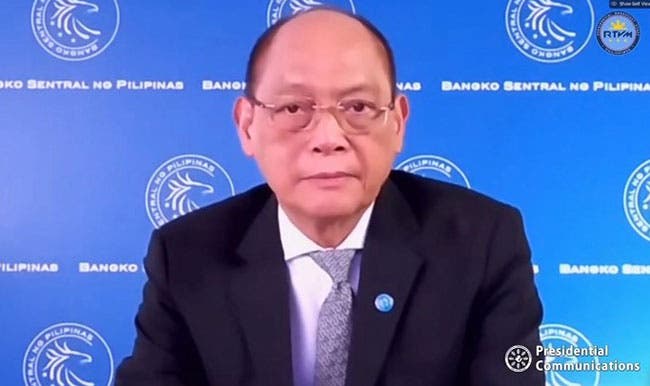
The Bangko Sentral ng Pilipinas (BSP) believes that reopening the economy further would encourage lenders to extend more loans to households and enterprises.
During a virtual briefing on Thursday, BSP Governor Benjamin Diokno said the central bank “remains confident that domestic liquidity will remain adequate in the coming months, and credit activity will gradually pick up with the reopening of the economy and support from the government.”
This is after he revealed that bank lending rates have generally declined for most types of loans, based on the Bangko Sentral’s special survey on monthly lending rates of universal and commercial banks from end-January to end-June.
Latest data also showed that the country’s domestic liquidity or M3 picked up by 12.3 percent year-on-year to P13.5 trillion in September, slower than the revised 13.7 percent in August. Month-on-month and seasonally adjusted, M3 rose by 0.2 percent.
Expansion in bank lending also eased to 2.8 percent in the ninth month from 4.7 percent in August. Month-on-month and seasonally adjusted, commercial bank loans fell by 1 percent.
“The impact of policy rates adjustments and our recently RRR cuts on market interest rates and banks funding costs may take longer time to materialize,” Diokno said.
The central bank has reduced its key interest rate by 200 basis points so far this year. The RRR, or reserve requirement ratio — the proportion of current deposits that banks need to keep with the central bank against the sum they can loan out to borrowers — currently stands at 12 percent.
Despite this, Diokno said the current policy and liquidity-easing measures of the BSP had injected into the financial system over P1.9 trillion in liquidity, equivalent to about 10 percent of the country’s nominal gross domestic product as of last year.
He assured the public that the Philippine banking system was projected to withstand the adverse effects of the coronavirus disease 2019 pandemic.
This, he said, was on account of the industry’s inherent strength and relatively ample capital and liquidity buffers, and of banks’ sound corporate governance and risk management systems, complemented by the Bangko Sentral’s implementation of prudential and monetary relief measures.
Citing preliminary data as of end-September, the central bank chief reported that the banking system’s capital position has strengthened, as total capital reached P2.4 trillion, 6.7 percent and 3.8 percent higher than the amount posted a year ago and as of end-December 2019, respectively.
“Moreover, based on key indicators and results of [the] BSP’s stress test exercises, capital adequacy ratio, or CAR, of banks will stay above the BSP and BIS (Bank of International Settlements) thresholds,” he said.

